According to the most recent report by the U.S. Energy Information Administration (EIA), natural gas power burn, the use of natural gas for power generation, reached record high levels in January and February.
Unfortunately for gas investors, the surge in power burn has done little boost gas’ slumping price in the current weak commodity price environment.
Here is a breakdown of the state of the natural gas industry in eight images.
The record high power burn so far this year has resulted from several factors, including cold temperatures, increased gas-fired capacity and low gas prices.
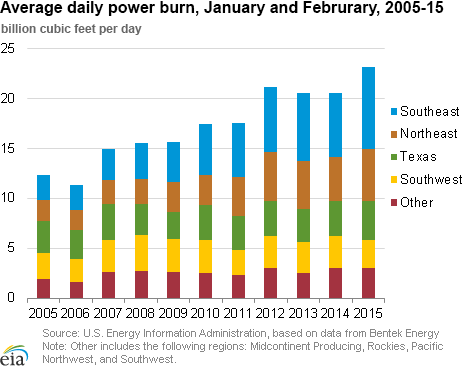
Temperatures for most of the country have been below average for much of 2015, including this data for the week ending Feburary 26.
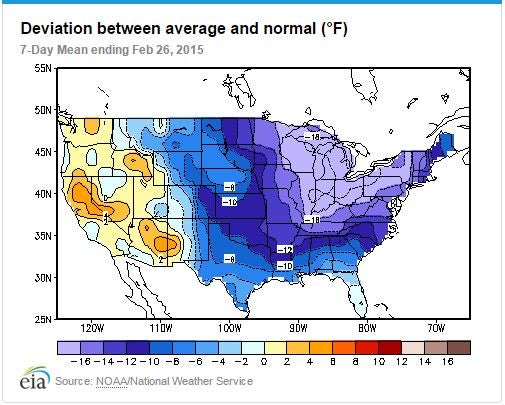
The recent increase in power burn has coincided with a small spike in gas spot prices. However, gas prices are still down by more than a third in the past year. While the 34 percent drop in gas prices is bad, it’s not nearly as bad as the more than 50 percent drop in WTI crude oil prices during the same stretch.

Gas supplies are down week-over-week nearly across the board, while year-over-year supply is up in every category other than the Midwest.
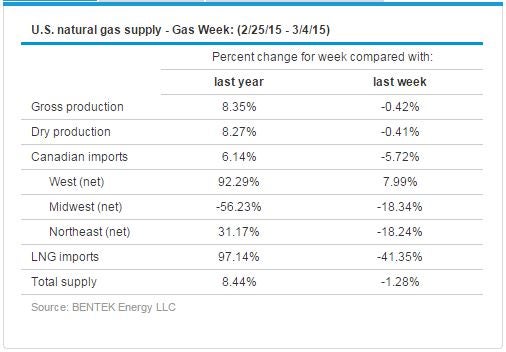
Natural gas rig counts are at their lowest in eight years, but it has done little to support the spot price.
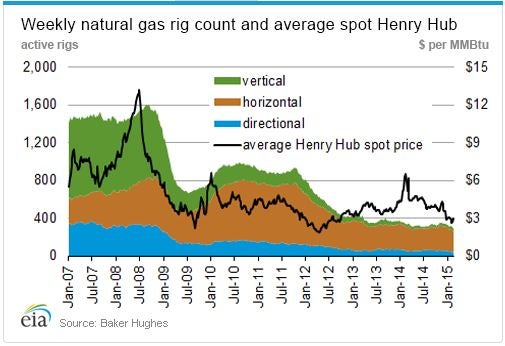
Underground storage levels are currently near the middle of the 2009-2013 historical range.

Monthly dry shale gas production has exploded in recent years, driven by a huge ramp-up in the Marcellus shale.
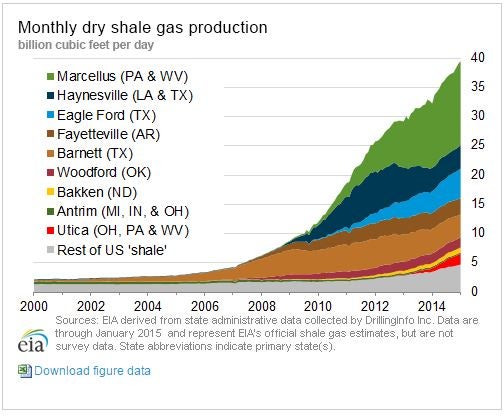
Unfortunately for investors of the United States Natural Gas Fund ETF UNG 0.14%, the fund has underperformed the spot price in the past year, falling more than 44 percent.
This underperformance has not been the case for investors in the United States Oil Fund ETF USO 2.51%, which has slightly outperformed the price of WTI crude in the past year.
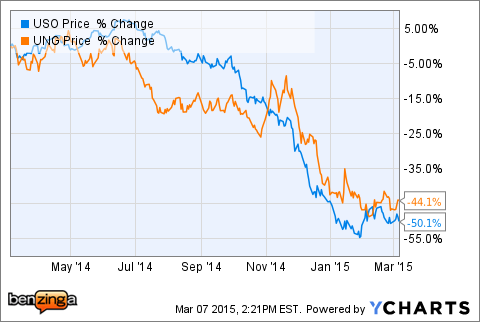
Read this article and all my other articles for free on Benzinga by clicking here
Want to learn more about the stock market? Or maybe you just want to be able to look sophisticated in front of your coworkers when they ask you what you are reading on your Kindle, and you’d prefer to tell them “Oh, I’m just reading a book about stock market analysis,” rather than the usual “Oh, I’m just looking at pics of my ex-girlfriend on Facebook.” For these reasons and more, check out my book, Beating Wall Street with Common Sense. I don’t have a degree in finance; I have a degree in neuroscience. You don’t have to predict what stocks will do if you can predict what traders will do and be one step ahead of them. I made a 400% return in the stock market over five years using only basic principles of psychology and common sense. Beating Wall Street with Common Sense is now available on Amazon, and tradingcommonsense.com is always available on your local internet!


